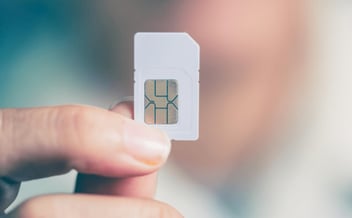

Understanding Remote SIM Provisioning
SIM provisioning plays a vital role in meeting the needs of IoT devices that demand global coverage, reliability, and flexibility. It allows these devices to choose the best service plan for their specific requirements.
While traditional SIM card provisioning has been the standard method for many years, advancements like Remote SIM Provisioning (RSP) and eUICC technologies have emerged to overcome some of its limitations, providing efficiency in managing mobile connectivity.
What is SIM card provisioning?
SIM card provisioning is the process of getting a SIM card ready to use in a device and connect to a cellular network. It involves registering the SIM card in the databases that verify its identity and permissions. Afterwards, it activates the profile that matches the network operator and service plan. SIM card provisioning can be done remotely or physically, depending on the type of SIM card and the device.
What is Remote SIM Provisioning (RSP)?
RSP utilises Over the Air (OTA) technology, enabling seamless network operator changes without physical SIM card replacement. Compatible with eSIM or eUICC cards, RSP facilitates easy SIM profile switching over the air. It offers advantages such as optimising device connectivity, reducing SIM card management costs, providing flexibility in service plan selection, and fostering new business models for independent connectivity. Developed by the GSMA, RSP can cater to two main types of applications: consumer devices like smartphones and smartwatches and M2M (Machine to Machine) for business-oriented IoT devices such as smart meters and logistics trackers.
The RSP process unfolds through several key steps:
- Installation of eSIM: The device manufacturer or owner installs an eSIM in the device, featuring a bootstrap profile for internet connection and interaction with the Remote SIM Provisioning platform.
- Network and Service Selection: Based on the network serving connectivity to the device or the country where the device is located, a network operator and a service plan are selected according to the predefined rules accessible through the Connectivity Management Platform (CMP).
- Profile Creation Request: The RSP platform initiates a request to the chosen network operator to create a new profile for the device, encompassing essential operator and subscriber data like the IMSI (International Mobile Subscriber Identity) and authentication keys.
- Profile Generation and Transmission: The network operator generates the new profile, sends it back to the RSP platform, which encrypts it, and then delivers it securely to the device over the internet.
- Profile Installation and Activation: The device receives the encrypted profile and installs it on the eSIM, either replacing or supplementing the existing profile. Subsequently, the device activates the new profile, establishing a connection with the chosen network operator's cellular service.
- Profile Management: The device can seamlessly switch between profiles on the eSIM or download new profiles from different operators by repeating the same over-the-air process.
Benefits of RSP
RSP offers a wide range of benefits as compared to the traditional SIM provisioning. Let us discuss some of the benefits of RSP or change of SIM profiles over-the-air for IoT M2M devices:
Effortless Global Connectivity: IoT devices can seamlessly connect to the best available network worldwide. This global connectivity ensures that the devices can operate efficiently regardless of geographical location.
Flexible Service Plans: The RSP technology provides IoT devices with the choice in selecting service plans. This flexibility optimises the data usage based on the device’s specific needs.
Streamlined Operations: RSP provisioning simplifies the operational aspects of managing IoT devices. Switching the SIM profiles and other adjustments can be made remotely without the need for physical SIM card replacement. Thereby enabling quick adaptation of devices to changing requirements.
Enhanced Security: Authentication and security measures can be implemented through RSP, ensuring the integrity of communications in applications like industrial automation and smart infrastructure.
Compliance: Connectivity is under geopolitical regulation that keeps shifting. Being able to deploy over-the-air updates in order to comply with data sovereignty and roaming policies can eliminate the regulatory risk of being non-compliant.
Velos IoT eSIM solution
The Velos IoT eSIM solution opens the door to various IoT use cases. Devices like connected vehicles and industrial sensors can take advantage of the ability to switch SIM profiles over the air and adjust to diverse network requirements, eventually improving their performance across a range of scenarios. The Velos IoT eSIM solution comes with the following capabilities:
eSIM Connect offers the best connectivity solution across various network technologies and over-the-air management of multiple profiles. You can manage your eSIM estate within our Nomad CMP and manage and control your device’s network subscription and RSP through a single platform.
eSIM Profile lets your IoT devices connect worldwide instantly when they are activated. Use the Velos IoT profile as the bootstrap profile and access 700+ roaming agreements.
 To learn more about the Velos IoT eSIM solution, check out this guide on future-proofing with eSIM Connect, our complete solution for eSIM management.
To learn more about the Velos IoT eSIM solution, check out this guide on future-proofing with eSIM Connect, our complete solution for eSIM management.
Speak to a Velos IoT expert
Related articles


SIM profile management – linear or circular?

How to choose the right SIM Form Factors for your business?
IoT SIMs, also known as M2M (machine to machine) SIMs, are used for global deployments using...

